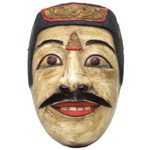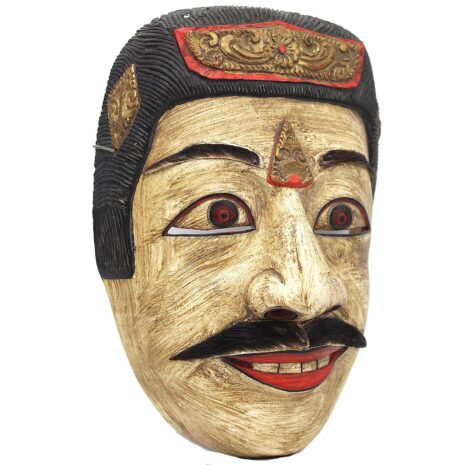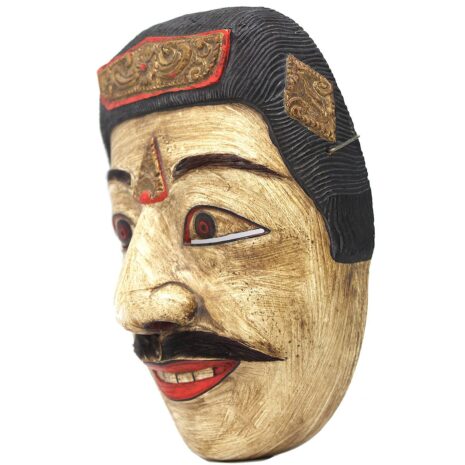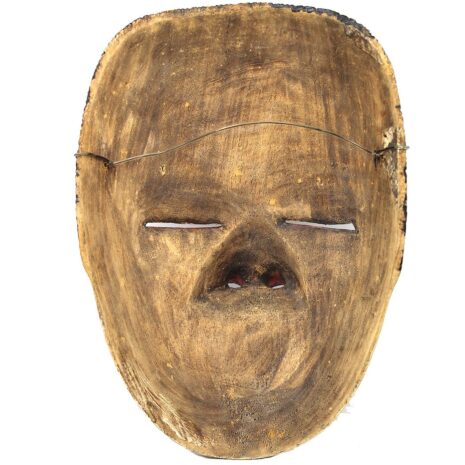Description
All ethnic mask (topeng) dances in Bali are accompanied with music from a gamelan percussion orchestra as are dramas and other entertainments considered as offerings to honor, please and attract the favor of the gods and ancestral spirits. In the west dancers put on masks to pretend they are someone else. Balinese dancers become the character they dance. Traditional masks are often made from pulai wood that rarely cracks and is not difficult to carve. Masks are not simply part of a costume; they possess spiritual magic (tenget) and power. Topeng dalem is often takes place in a sacred outer temple courtyard during an odalan – a yearly festive celebrating the founding of a Hindu temple that occurs every 210 days (a year on the Balinese religious calendar). A single male dancer preforms a 5 dance set called topeng pajegan and he changes masks and costumes with the audience watching. Dancers must express each personality using only a variety of movements, postures and gestures. Folk-art masks may also be used for dramatic stories derived from the Hindu epics the Ramayana and the Mahabharata as well as Babad Dalem, the historical chronicles of Hindu-Balinese kings. Balinese Masks are part of the VA Hindu-Cultural-and-Ritual Art Collection.
Click here for the blog Indonesian Dance Masks (Topeng): Spiritually Connecting the Community
Additional information
| Weight | 3 lbs |
|---|---|
| Dimensions | 12 × 9 × 6 in |
| Place of Origin | Indonesia |
| Period | Vintage (1920-1980) |
| Date | 1920-1980 |
| Materials and Technique | Wood |
| Dimensions (inches) | Ht: 8.5” W: 6” D: 3.25” |
| Dimensions (metric) | Ht: 21.90cm W: 15.24cm D: 8.25cm |
| Weight | 4.3 oz |
| Condition | Excellent, See Descripton |
| Item Number | 1301-2FBE |
| Shipping Box Size |








